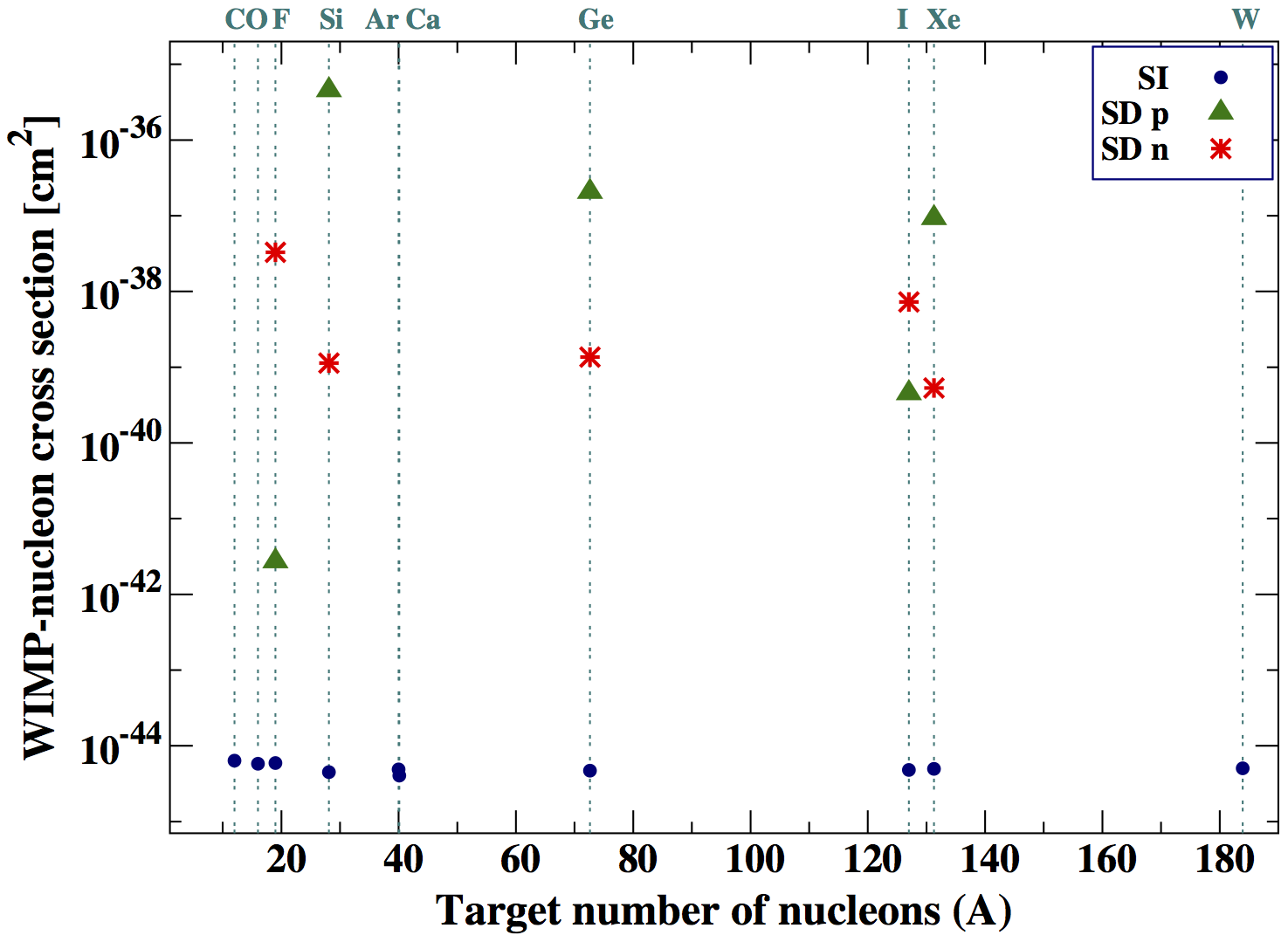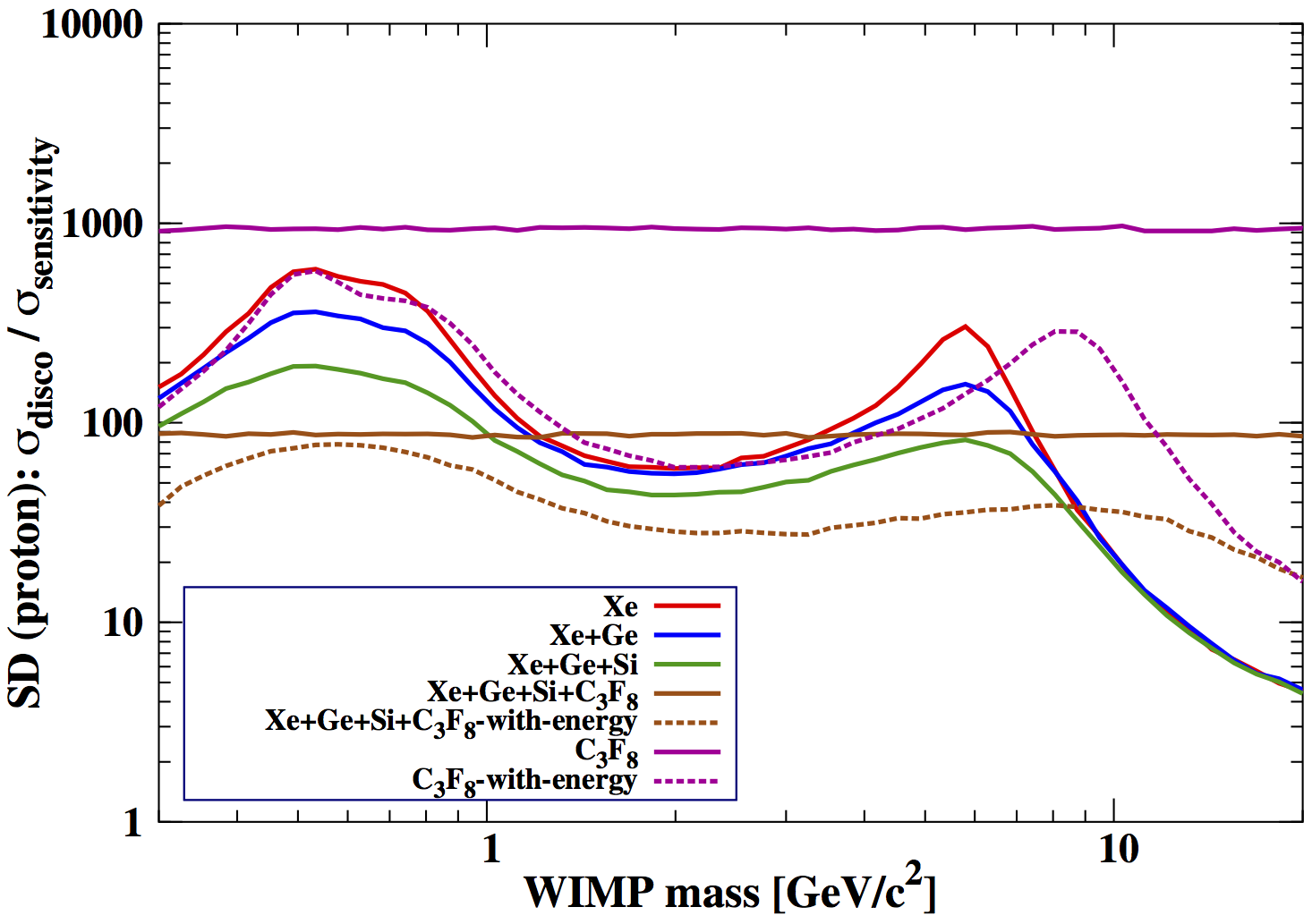Recherche
Joint Chandra/SPT Analysis of 67 Galaxy Clusters Along a Common Evolutionary Track
We present the results of a joint analysis of Chandra X-ray and South Pole Telescope (SPT) SZ observations targeting the first sample of galaxy clusters at 0.3 < z < 1.3, selected to be the progenitors of well-studied nearby clusters based on their expected accretion rate. We develop a new procedure in order to tackle the analysis challenge that is estimating the intracluster medium (ICM) properties of low-mass and high-redshift clusters with ~150 X-ray counts. One of the dominant sources of uncertainty on the ICM density profile estimated with a standard X-ray analysis with such shallow X-ray data is due to the systematic uncertainty associated with the ICM temperature obtained through the analysis of the background-dominated X-ray spectrum. We show that we can decrease the uncertainty on the density profile by a factor ~5 with a joint deprojection of the X-ray surface brightness profile measured by Chandra and the SZ integrated Compton parameter available in the SPT cluster catalog. We apply this technique to the whole sample of 67 clusters in order to track the evolution of the ICM core density during cluster growth. We confirm that the evolution of the gas density profile is well modeled by the combination of a fixed core and a self-similarly evolving non-cool core profile. We show that the fraction of cool-cores in this sample is remarkably stable with redshift although clusters have gained a factor ~4 in total mass over the past ~9 Gyr. This new sample combined with our new X-ray/SZ analysis procedure and extensive multi-wavelength data will allow us to address fundamental shortcomings in our current understanding of cluster formation and evolution at z > 1.The complete study here
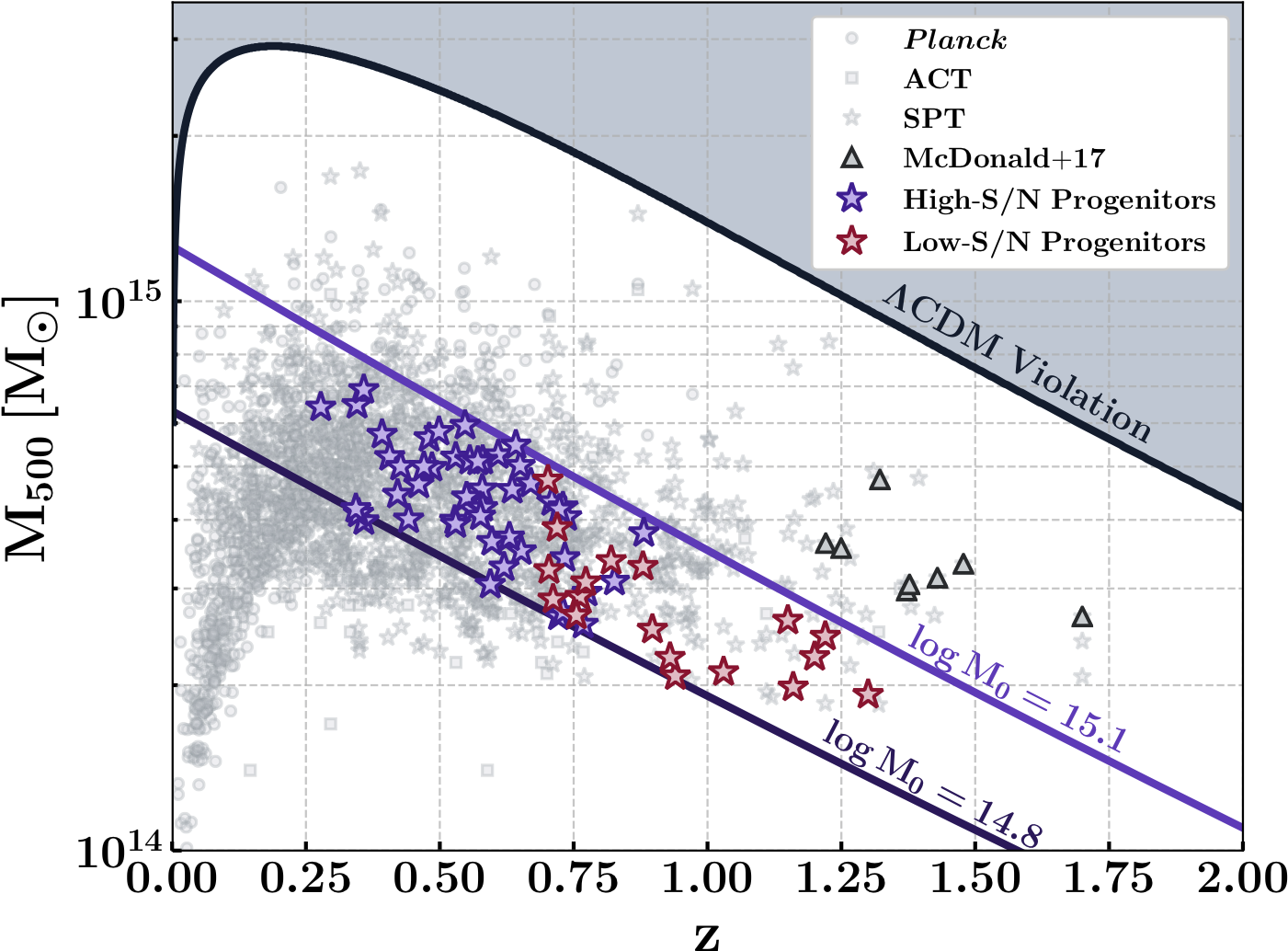
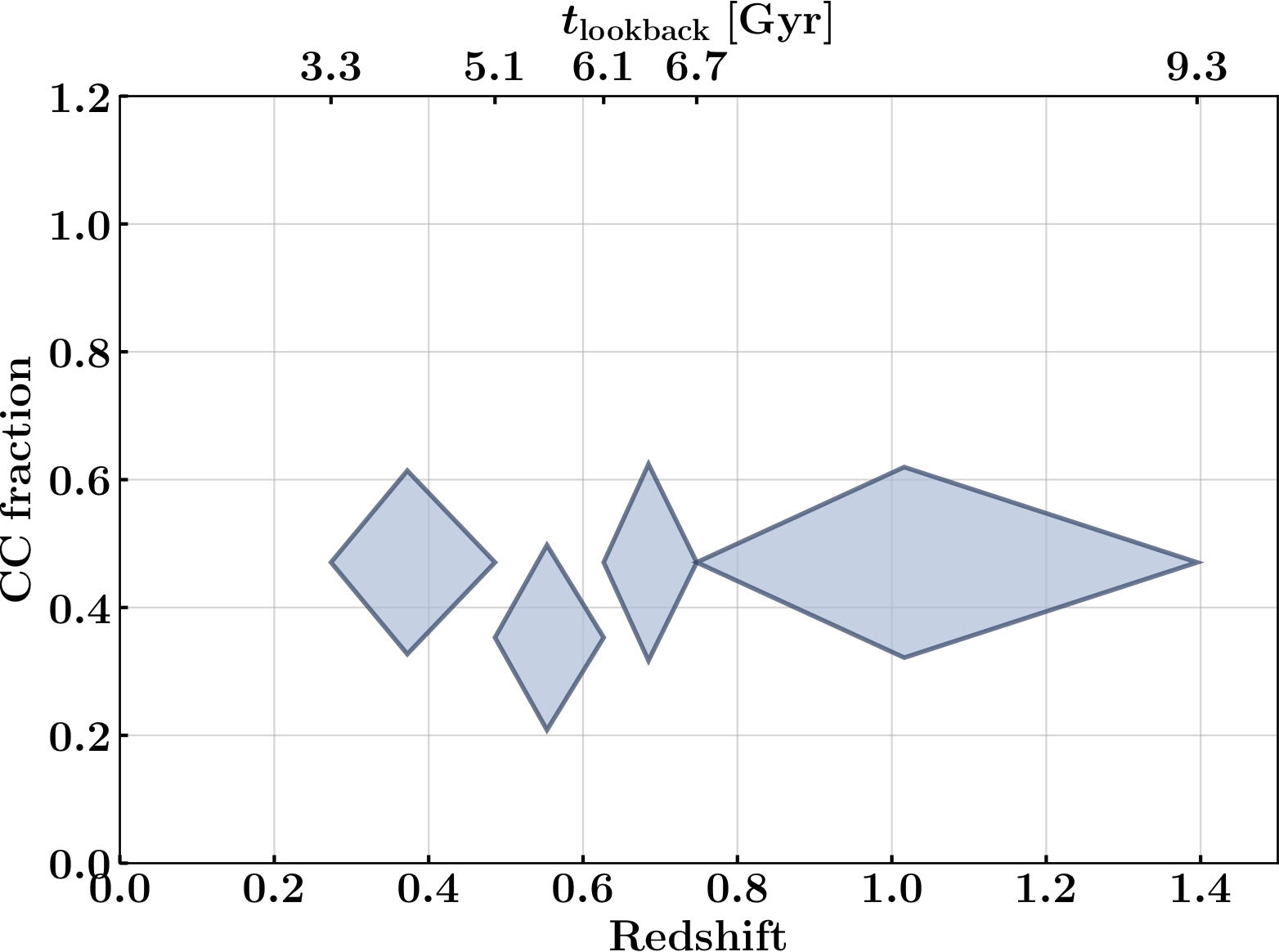
Merger dynamics and core properties of the most massive MaDCoWS cluster at z = 1.2
The characterization of the Intra-Cluster Medium (ICM) properties of high-redshift galaxy clusters is fundamental to our understanding of large-scale structure formation processes. We present the results of a multi-wavelength analysis of the very massive cluster MOO J1142+1527 at a redshift z = 1.2 discovered as part of the Massive and Distant Clusters of WISE Survey (MaDCoWS). This analysis is based on high angular resolution Chandra X-ray and NIKA2 Sunyaev-Zel'dovich (SZ) data. Although the X-ray data have only about 1700 counts, we are able to determine the ICM thermodynamic radial profiles, namely temperature, entropy, and hydrostatic mass. These have been obtained with unprecedented precision at this redshift and up to 0.7R500, thanks to the combination of high-resolution X-ray and SZ data. The comparison between the galaxy distribution mapped in infrared by Spitzer and the morphological properties of the ICM derived from the combined analysis of the Chandra and NIKA2 data leads us to the conclusion that the cluster is an on-going merger. We measure the hydrostatic mass profile of the cluster in four angular sectors centered on the large-scale X-ray centroid. This allows us to estimate a systematic uncertainty on the cluster total mass that characterizes both the impact of the observed deviations from spherical symmetry and of the core dynamics on the mass profile. We further combine the X-ray and SZ data at the pixel level to obtain maps of the temperature and entropy distributions averaged along the line of sight. We find a relatively low entropy core at the position of the X-ray peak and high temperature regions located on its south and west sides. The increase in ICM temperature at the location of the SZ peak is expected given the merger dynamics. This work demonstrates that the addition of spatially resolved SZ observations to low signal-to-noise X-ray data brings a high information gain on the characterization of the evolution of ICM thermodynamic properties at z>1.The complete study here
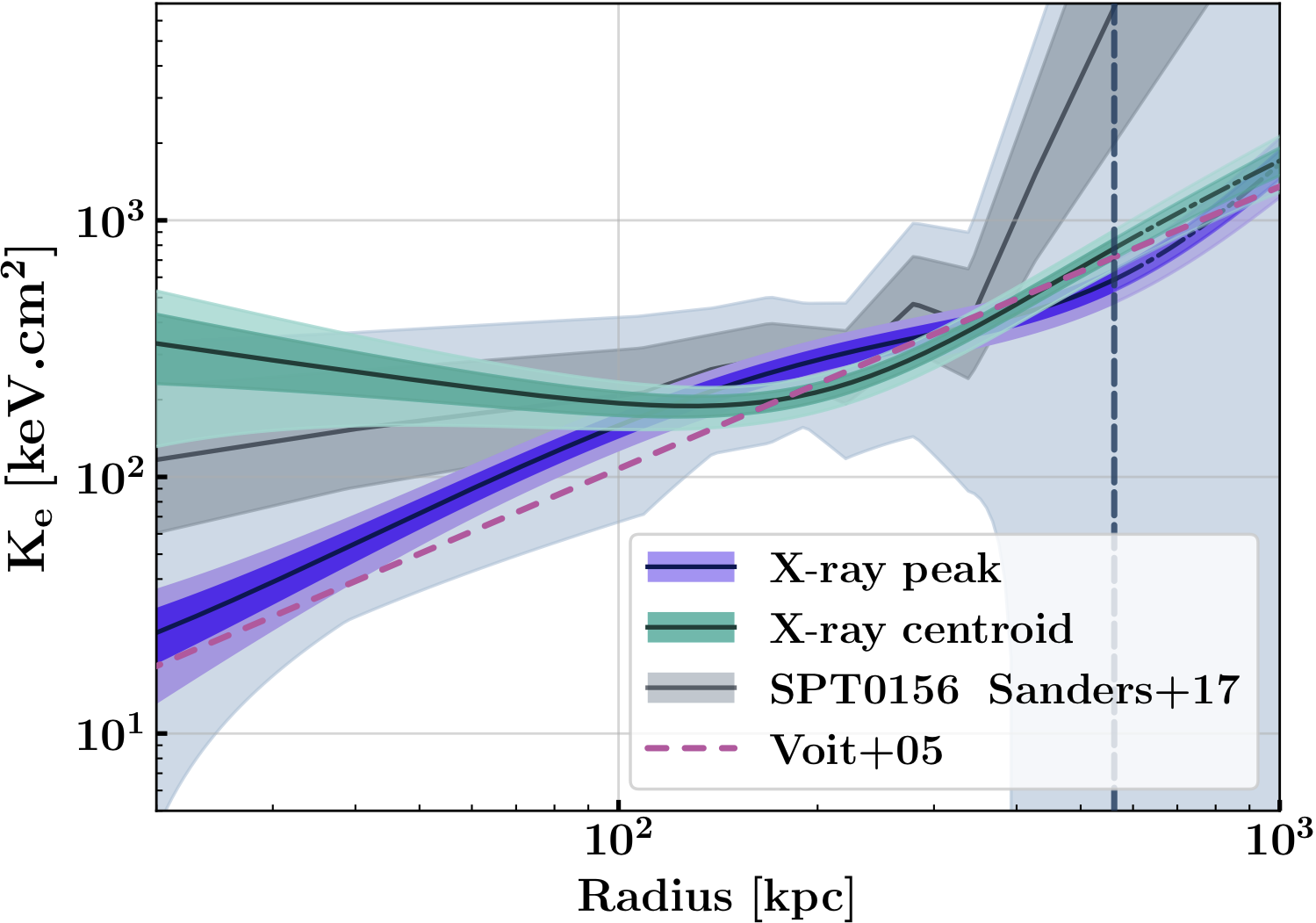
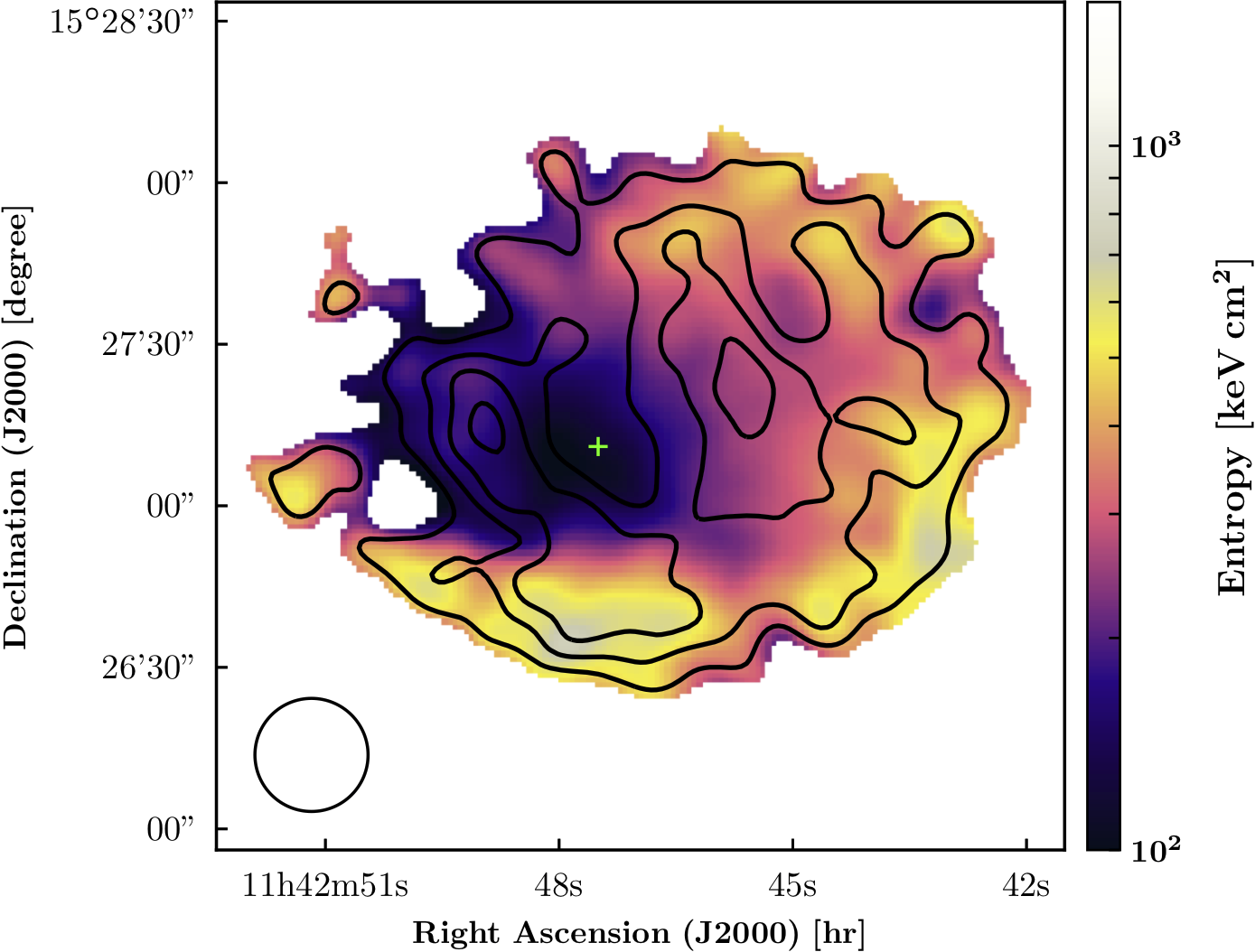
Impact of the mean pressure profile of galaxy clusters on tSZ cosmological constraints
Cosmological analyses based on surveys of galaxy clusters observed through the thermal Sunyaev-Zel'dovich (tSZ) effect strongly rely on the mean pressure profile of the galaxy cluster population. A tension is currently observed between the cosmological constraints obtained from the analyses of the CMB primary anisotropies and those from cluster abundance in tSZ surveys. This discrepancy between the estimated cosmological constraints may be partly explained by a wrong estimate of the hydrostatic bias parameter that links the hydrostatic mass to the true mass of galaxy clusters. However, a variation of both the amplitude and the shape of the mean normalized pressure profile could also explain part of this tension. If the self-similar hypothesis is not verified in the whole mass-redshift plane, the parameters of the mean normalized pressure profile of the cluster population could be different from the ones observed at high mass and low redshift. We analyze the effects of a modification of this profile on the constraints of the σ8 and Ωm parameters through the analysis of the Planck tSZ power spectrum. We choose two mean normalized pressure profiles that are respectively lower and higher than the one obtained from the observation of 62 nearby clusters by Planck. The selection of the parameters of these two profiles is based on the current estimates of the pressure and the gas mass fraction profile distributions at low redshift. The cosmological parameters found for these two profiles are significantly different from the ones obtained with the Planck pressure profile. We conclude that a ∼15% decrease of the amplitude of the mean normalized pressure profile would alleviate the tension observed between the constraints of σ8 and Ωm obtained from the CMB and cluster analyses without requiring extreme values of the mass bias parameter.The complete study here
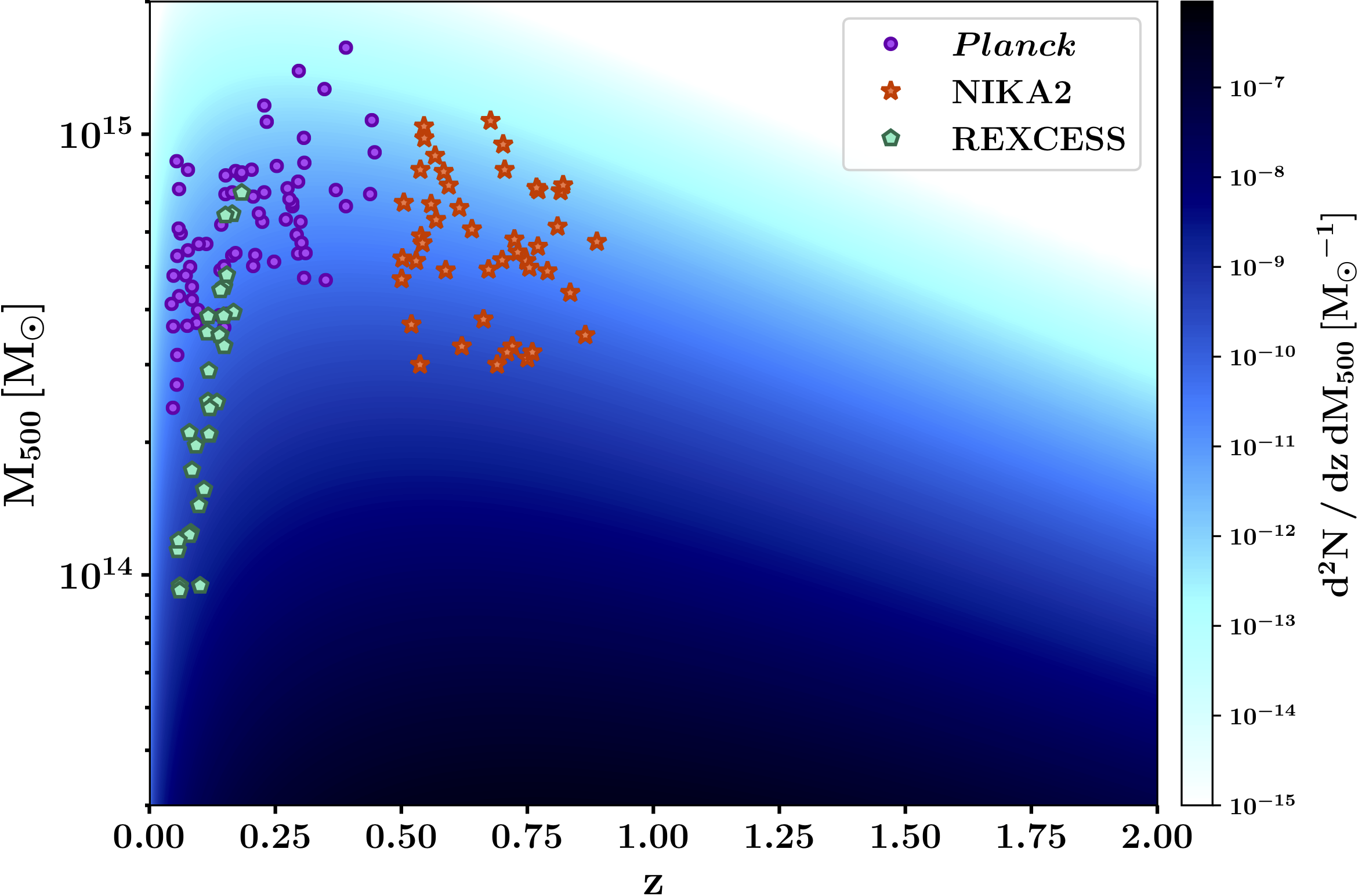
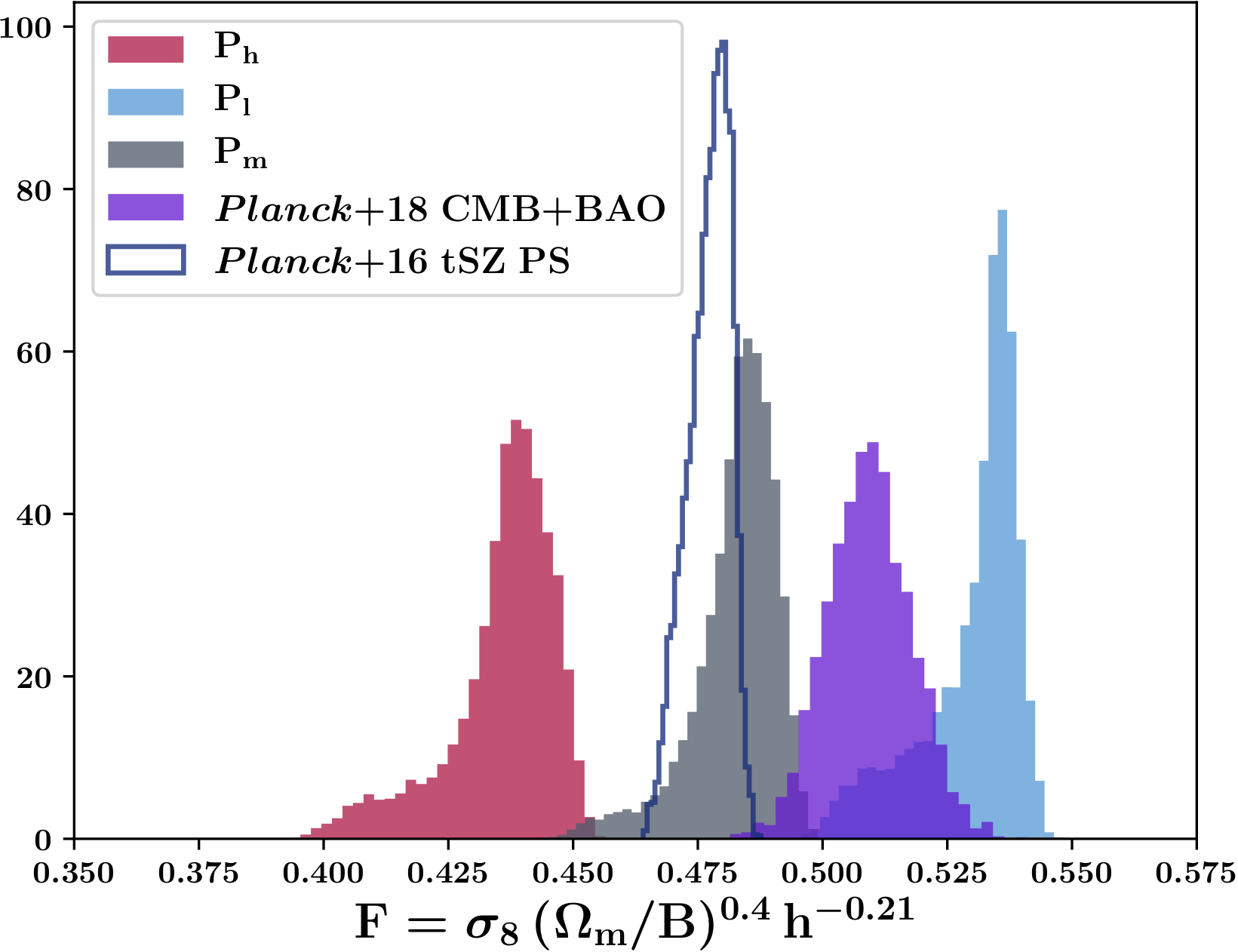
A prospective study of the NIKA2 SZ large program with MUSIC synthetic clusters
In order to estimate the impact of intracluster medium (ICM) disturbances that can be detected by NIKA2 on the mean pressure profile of galaxy clusters, we realize a prospective study based on a synthetic cluster sample that is similar to the one of the NIKA2 tSZ large program. To reach this goal we employ the hydrodynamical N-body simulation Marenostrum MUltidark SImulations of galaxy Clusters (MUSIC). We simulate realistic NIKA2 and Planck tSZ observations that are jointly analyzed in order to estimate the ICM pressure profile of each cluster. The comparison of the deprojected profiles with the true radial profiles directly extracted from the MUSIC simulation allows us to validate the NIKA2 tSZ pipeline and to study the impact of ICM disturbances on the characterization of the ICM pressure distribution even at high redshift. After normalizing each profile by the integrated quantities estimated under the hydrostatic equilibrium hypothesis, we evaluate the mean pressure profile of the twin sample and show that it is compatible with the one extracted directly from the MUSIC simulation, in the range of scales that can be recovered by NIKA2. We study the impact of cluster dynamical state on both its shape and associated scatter. We observe that, at R500 the scatter of the distribution of normalized pressure profiles associated with the selected morphologically disturbed clusters is 65% larger than the one associated with relaxed clusters.The complete study here
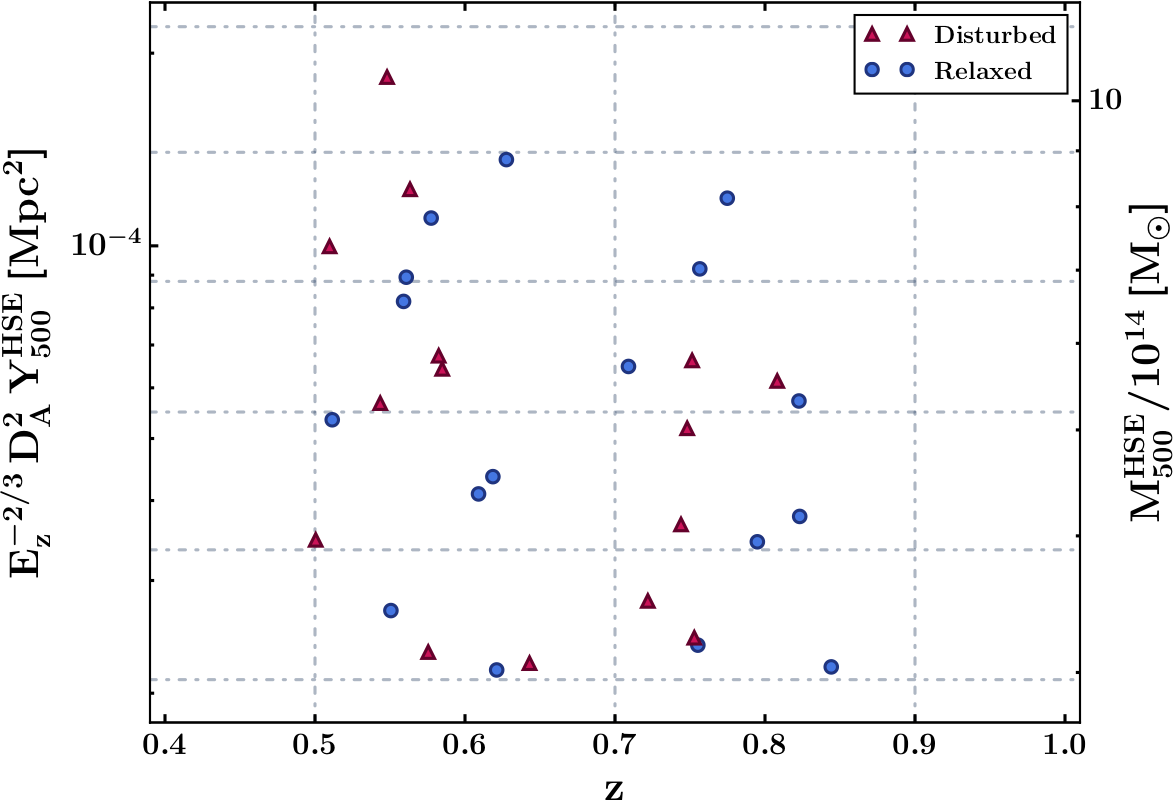
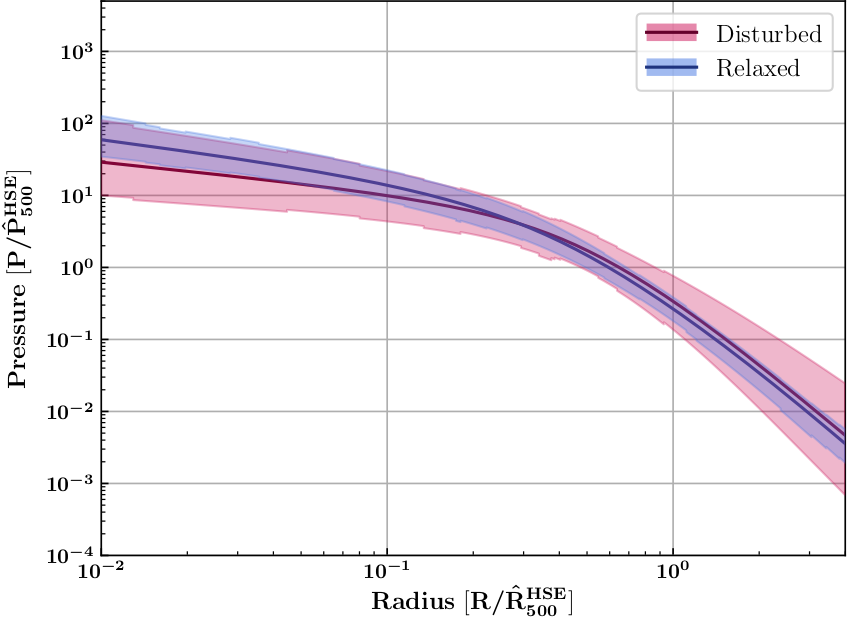
First tSZ mapping of a galaxy cluster with NIKA2
In this paper, we present the thermal Sunyaev-Zel’dovich (tSZ) mapping of the galaxy cluster PSZ2 G144.83+25.11 at redshift z = 0.58 with the NIKA2 camera, a dual-band (150 and 260 GHz) instrument operated at the IRAM 30-meter telescope. This is the first tSZ observation of a cluster from the sample of the NIKA2 tSZ large program that aims at constraining the redshift evolution of the pressure profile and the tSZ-scaling relation. We identify a thermal pressure excess in the south-west region of PSZ2 G144.83+25.11 and a high redshift sub-millimeter point source that affect the intracluster medium (ICM) morphology of the cluster. The NIKA2 data are used jointly with tSZ data acquired by the MUSTANG, Bolocam, and Planck experiments in order to non-parametrically set the best constraints on the electronic pressure distribution from the cluster core (R ∼ 0.02R500) to its outskirts (R ∼ 3R500). We investigate the impact of the over-pressure region on the shape of the pressure profile and on the constraint on Y500. A hydrostatic mass analysis is also performed by combining the tSZ constrained pressure profile with the deprojected electronic density profile from XMM-Newton. This allows us to conclude that the high angular resolution of NIKA2 enables excluding the thermal pressure excess which would otherwise be integrated into the radial pressure profile. This decreases significantly the hydrostatic mass estimate computed for this cluster. This work highlights the potential of NIKA2 to study the impact of the ICM dynamics on the calibration of the Y500-M500 scaling relation.The complete study here
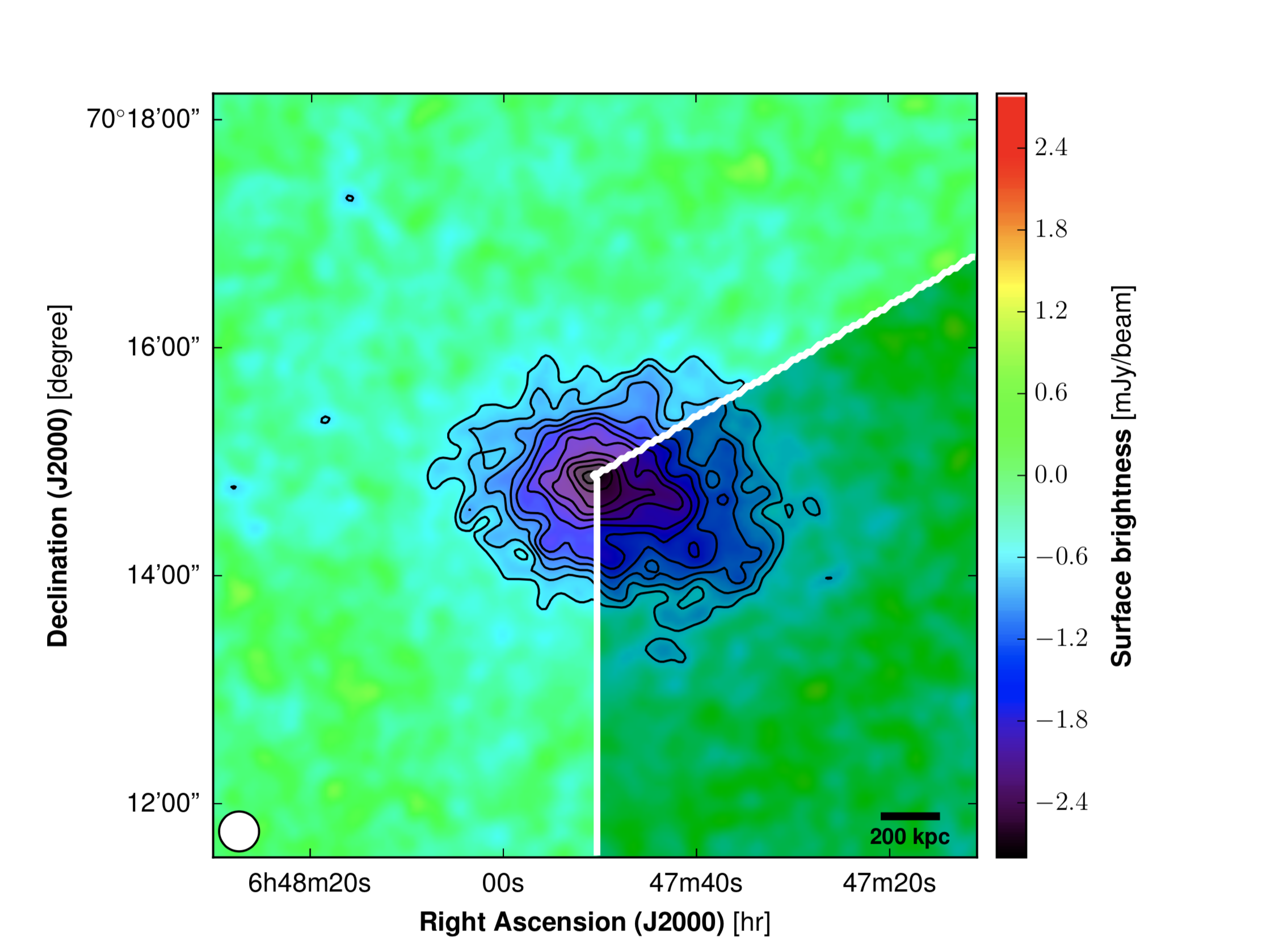
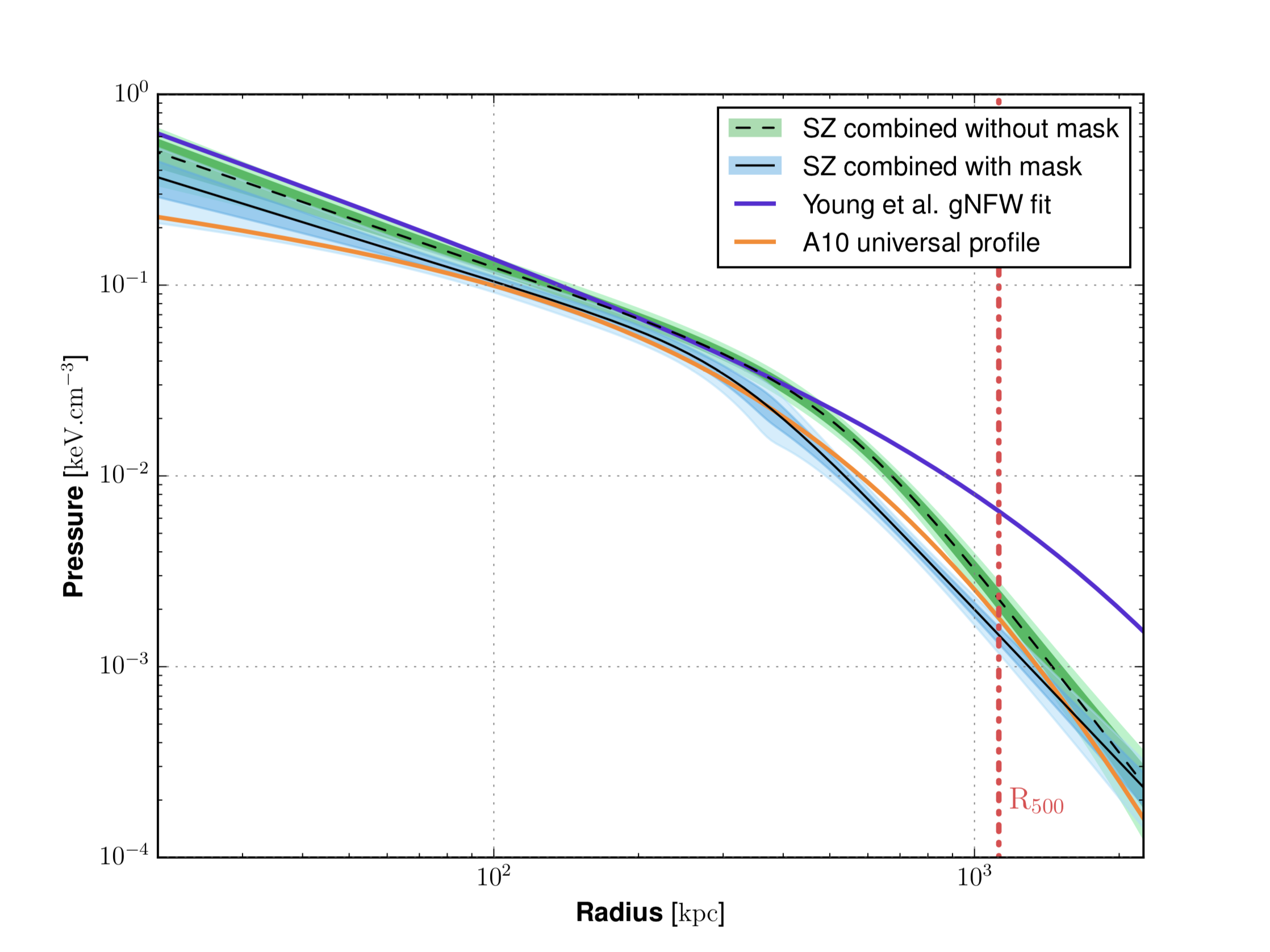
Non-parametric deprojection of NIKA SZ observations
This study is an application of high resolution (<20 arcsec) thermal Sunyaev-Zel’dovich observations by probing the intracluster medium of the Planck-discovered galaxy cluster PSZ1 G045.85+57.71 at redshift z=0.61, using SZ data obtained with the NIKA camera. A joint deprojection of NIKA and Planck data is performed to extract the electronic pressure distribution from the cluster core (R∼0.02R500) to its outskirts (R∼3R500) non-parametrically for the first time at intermediate redshift (figure on the left). The constraints on the resulting pressure profile allow us to reduce the relative uncertainty on the integrated Compton parameter by a factor of two compared to the Planck value. Combining the SZ data and the deprojected electronic density profile from XMM-Newton allows us to undertake a hydrostatic mass analysis, for which we study the impact of a spherical model assumption on the total mass estimate. We also investigate the radial temperature and entropy distributions (figure on the right) and conclude that this cluster is a cool-core system.The complete study here
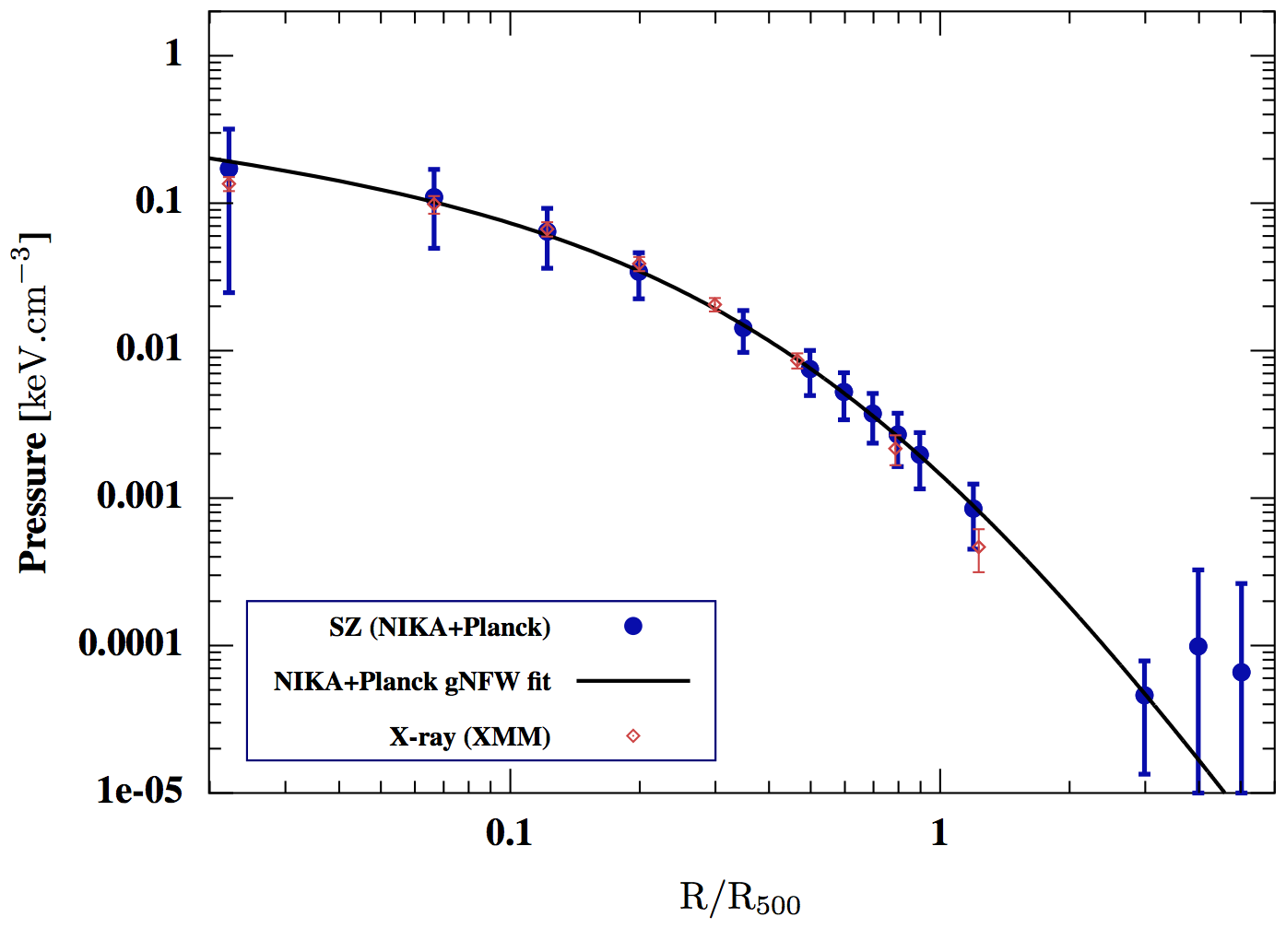
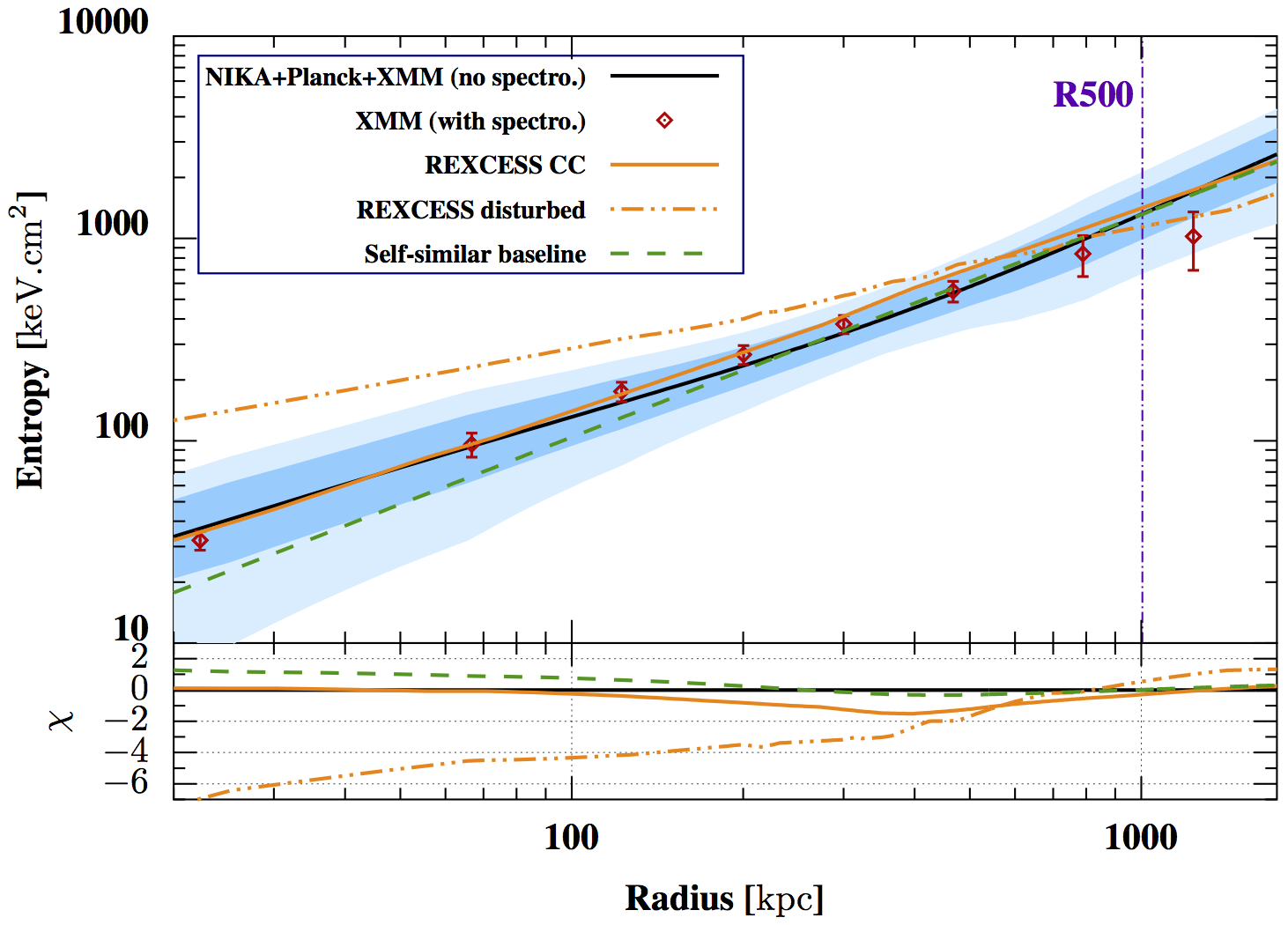
Complementarity of dark matter detectors in light of the neutrino background
Direct detection dark matter experiments looking for WIMP-nucleus elastic scattering will soon be sensitive to an irreducible background from neutrinos which will drastically affect their discovery potential. Here we explore how the neutrino background will affect future ton-scale experiments considering both spin-dependent and spin-independent interactions. We show that combining data from experiments using different targets can improve the dark matter discovery potential due to target complementarity. We find that in the context of spin-dependent interactions, combining results from several targets can greatly enhance the subtraction of the neutrino background for WIMP masses below 10 GeV/c2 and therefore probe dark matter models to lower cross-sections.The complete study here
